



Two years after his death, Harun Farocki continues to maintain an archetypal role in the world of the visual arts. Many mourned for the loss of a gifted artist who was as not just a filmmaker but a critic, activist and philosopher en masse. Farocki succeeded his German New Wave filmic predecessors as his work would seamlessly and at once command hilarity, disparagement and intellect. A project-retrospective collaboration of his work was undertaken, just two years after his death, with its first part at The Institut Valencià d’Art Modern (IVAM) named ‘What is at Stake’, and more recently the second-part titled ‘Empathy’at the Fundació Antoni Tàpies compiled of at least 8 works focusing on an analysis of labour within the framework of capitalist demands.
The title of the exhibition, ‘Empathy’ originates from Ancient Greek; ‘εμπάθεια’ is a compound of ‘έν’ and ‘πάθος’ meaning ‘moved by passion’. In German, empathy translates to ‘Einfühlung’ and was ironically exploited by Farocki in 2008 as the title for his text and reads:
‘A compound of Eindringen (to penetrate) and Mitfühlen (to sympathize). Somewhat forceful sympathy. It should be possible to empathize in such a way that is produces the effect of alienation.’
Taking into account Farocki’s liking of Brechtian ‘distanciation’, he formulated rather quickly that to ‘empathise’ means to project one’s own feelings, therefore infiltrating objective opinion. The notion of ‘empathy’ for Farocki was carefully tailored to a synthesis that gave him the patience to be simultaneaously attentive and austere towards his subjects’ predicaments. As paradoxical as it may seem, empathy and distance are nurtured companions. With Farocki’s interpretation of empathy in mind, I entered the dark bunker where the retrospective took place. A space usually leaking brightness from the glass roof was now transformed into an industrious zone of projections, obsolete TV sets and the mellifluous humming of those operative machines. Farocki’s filmic oeuvre overflowed from devices onto white surfaces, accentuating the techno-capitalistic condition of labour operating eradically for our Western communities.
As you enter, the video-installation of Workers Leaving the Factory in Eleven Decades (2006) dominates the center. Twelve TV monitors are laid out in a horizontal line, juxtaposing chronologically the moment where the worker leaves the factory in Farocki’s twelve chosen films – among them, Workers Leaving the Lumiére Factory in Lyon (1895), Deserto Rosso (1964) and Dancer in the Dark (2000). Here, the excerpts are used as a mnemonic tool as Farocki’s montage gravitates around the entrance of each factory. Each scene extrapolates the repetition of entering as a rhetorical techne, an emphatic mimesis of organising and preserving power through the image of the factory and its systems of subjugation. Yet, distance and empathy are circular and procedural.
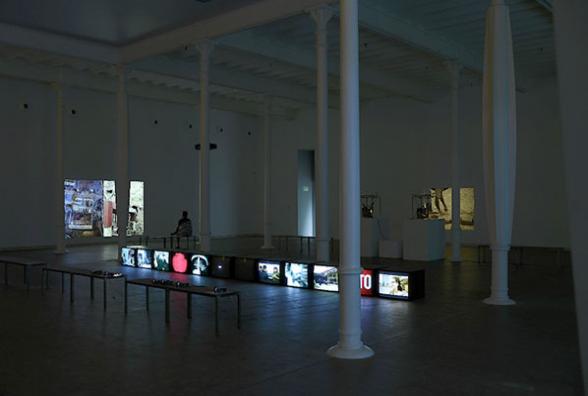
Curated to encourage a clockwise movement following the introductory piece, A New Product (2012) is being televised to the left. It commences during a mundane corporate board meeting for a consulting company violently regurgitating neoliberal logic. The goal of the meeting is to amplify competition and ascertain efficiency of their employees in the workplace by creation of a new product. Through the repetitive flipping of charts and reports, Farocki succeeds in capturing the vocabulary of rationalisation regarding their employees’ assets while unfolding the dynamics of the team and its public presentation. The narrative’s structure being static and unobtrusive, in conjunction with the ascetic use of the camera implies a degree of distancing from the subject. Still, the absence of Farocki’s own evaluation additionally contains the capability to bolster the viewer’s assessment of the situation thus achieving the artist’s desired equilibrium between empathy and distancing.
There existed a sense of rituality by which the projections were transmuted from a seemingly simple and observational nature, to one which was filled with the allegory of transparency and distance. Re-pouring (2010) was an ode to Tomas Scmidt’s Cycle for Water Buckets (or Bottles) from 1959. The original piece was a carefully choreographed mise-en-scene by which Scmidt poured one glass, a bottle of bucket of water into another. The act of pouring for Schmidt was one which indicated a simple and natural process of vaporisation with each pouring. Farocki had programmed machines to perform the artistic gesture for him, a re-pouring of the performative fluxus notion. A paradoxical act, since as human beings our navigational processes depend heavily on our cognitive ability, the mechanical hands were able to seamlessly perform the act of re-pouring. Farocki’s hyperrealism allows him to jump to a certain scale of futurity whilst also being rigorous of scrutinizing reality. The act of programming robots to perform a ritualistic and performative task goes undoubtebly implies distancing from the artistic practice of Fluxus. The Fluxus movement was predominantly a practice governed by experimental notions of performativity which were heavily conceptual. It therefore comes into stark contrast to the idea that such act could be thought by algorithm machines as notions of ‘thinking/feeling machines’ in contemporary society are rudimental and dreams of a future imagination. Farocki, able to perform the task himself such as with Indistinguishable Fire, does not. He steps out, physically distances himself from undertaking the task himself but maintains his empathy to former Fluxus activities but also expressing a empathy towards machines who today perform most human labour.
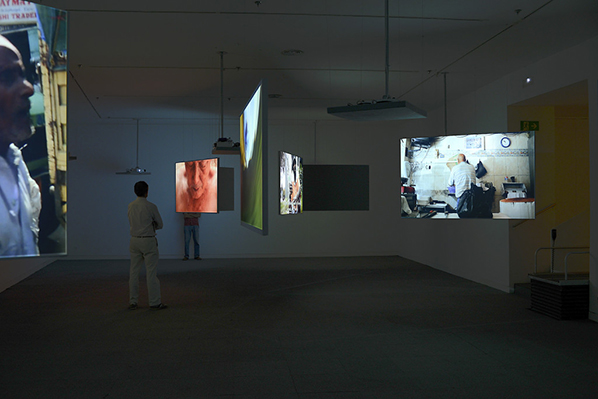
Amidst one of the spectacular accummulations of Farocki’s body of work, the apogee of the retrospective would be Labour in a Single Shot, shown for the first time in Spain. The project was initiated in 2011 by Harun Farocki and Antje Ehmann, co-curator of the retrospective. Located in an entirely different bunker, the work was compiled from a series of workshops whereby a fixed camera filmed paid, unpaid, material and immaterial labour from fifteen workshop locations. Projection screens are hanged in a room, most facing eachother whilst the noise of all labour taking place floods the space. Harmonious parallels are created as sequences from butcher shops and surgeries face eachother. The repetitive looping and sequencing of labour is used as a means of distancing and signifies non-judgmental watching as an active practice of iconic power. Our lasting impression is a call-girl sucking on a lollipop explaining how her artifice encourages clients into believing the gratification she provides is sincere. Here, we understand that just as she, through sex, retains empathy and distance in unison, Farocki’s empathy can thrive.
20 Digital Years Plus
Station Rose
Nurnberg 2010
ISBN 9783869841113
“Twenty Digital Years Plus” is a softback book that presents and contextualises the art of Station Rose (Elisa Rose and Gary Danner) from 1988 to the present. Its gatefold cover conceals both a CD and a DVD which provide audio and video to complement the static images and texts, and carries an endorsement from Bruce Sterling on the back cover.
The book starts with a series of essays before presenting an illustrated history of Station Rose. Those essays approach Station Rose from some refreshing and unexpected angles to make a convincing claim for their art historical interest.
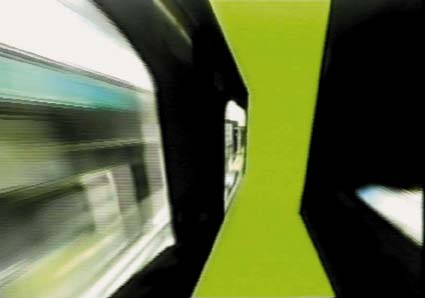
Peter Noever writes in the book’s preface that “Media art is both an art form and a way of life for Station Rose”, a claim that the evidence of the book more than supports and that I think is key to why Station Rose’s art is so interesting. The book functions as a mid-career retrospective, and Noever suitably sets the themes of achievement and continuity.
Vitus H. Weh’s essay explains how Station Rose got their name and puts their LoginCabin project into the context of German post-cold-war architecture and the sociology of the Wild West. We are a long way from the early 90s view of the Internet as a new frontier, but despite its critics that view was not uniquely tied to American society and provided a liberating impetus to individuals who didn’t always subscribe to the Californian Ideology.
Hans Diebner’s critique of net art and activism brings a thought-provoking scientific, techno-art historical and philosophical critical literacy to bear on Station Rose and the artists and activists that he contrasts them with. Diebner weaves together diverse conceptual strands into a coherent critical case without any resort to jargon, and it’s worth thinking through how his case affects our view of net art in general as well as Station Rose’s position within its history.
Didi Neidhart’s interview with Rose and Danner provides context for and insights into how the pair create and conceptualise their work, and how their art and music relate. Station Rose emerge as the product of cultural engagement and lived history rather than academic fashion.
Gabriel Horn writes from a curator’s point of view about the future shock of working with Station Rose in 1991, in contrast to working with them in 1999 when they are part of an intermedia exhibition.
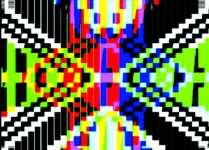
The bulk of the book is an illustrated history of Station Rose. They started out in 1988 as a multimedia lab in Vienna complete with 16-bit Amiga computer. In November 1988 they went online for the first time at the Sampling conference they held in Vienna, having already adopted the technology and concepts of sampling into their art and performance. Since then their work has taken the form of CD-ROMs, live streaming media, live multimedia performance, Internet homepages, CDs and vinyl with Sony records, books, TV shows, multimedia installation, webcasting, lecturing, teaching, and a shed.
Station Rose also create memes, or language, such as the statement quoted by Bruce Sterling on the back cover that “Cyberspace is Our Land”, the much needed identification of the “Digital Bohemian Lifestyle” and the increasingly paradigmatic condition of being “private://public”. Even in an age when the concept of multimedia has largely been absorbed by the Internet their work crosses and assembles different media.
Much of Station Rose’s digital art has the not quite glitch aesthetic of overlayed pixellated form in shallow depth that any serious history of digital art needs to account for. But the cubicles, huts, pillows and panels of their installation work have the same aesthetic. Station Rose’s work is in itself a history of digital art over the last two decades. And this digital art is always in dialogue with physical performance and physical structures, the virtual in dialog with the real to illuminate each other.
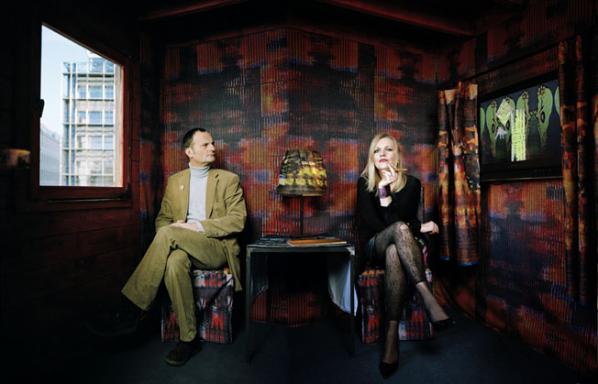
In Neidhardt’s interview, Danner says of Station Rose that “We are quickly bored with things as soon as they become mainstream.” Boredom with the content and products of digital media is the friend of the scheduled obsolescence and cultural amnesia of market mass media. But boredom with the form of and the means of creating digital media can also serve to motivate the creation of successive alternatives to it.
Over the last 20 years the Internet and digital media have gone from being a novelty to being socially and economically pervasive. This rate of change, and the constant promotion of different visions of what the Internet is for by different institutions, mean that our relationship with the Internet has come to be in plain sight. Artists can usefully depict and help us conceptualise that relationship, particularly those artists who can use the digital media that has been drawn into the Internet and become no small part of its operation.
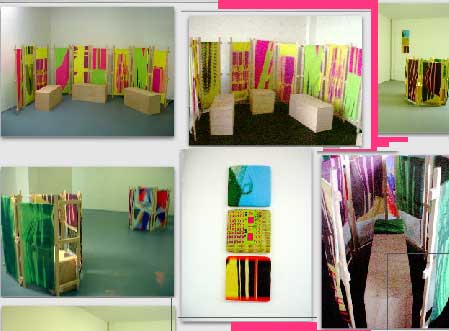
Station Rose are such artists. Their art has the quality of being both the product and producer of lived experience in the age of digital media. It refracts the logistics and glitches of the Internet through the prism of contemporary art’s deceptively low-fi rummage sale aesthetics to present them as objects of contemplation. When digital media was new this served to make them accessible to an unfamiliar public. Now that digital media are pervasive to the point of invisibility, this serves to make them visible again as objects of contemplation and to afford the viewer a critical distance from them.
20 Digital Years Plus is an engrossing, thought-provoking presentation of the ongoing development of Station Rose that makes clear the value of their constantly enquiring relationship to ever changing technology.
(With thanks to @MarkRHancock)
The text of this review is licenced under the Creative Commons BY-SA 3.0 Licence.